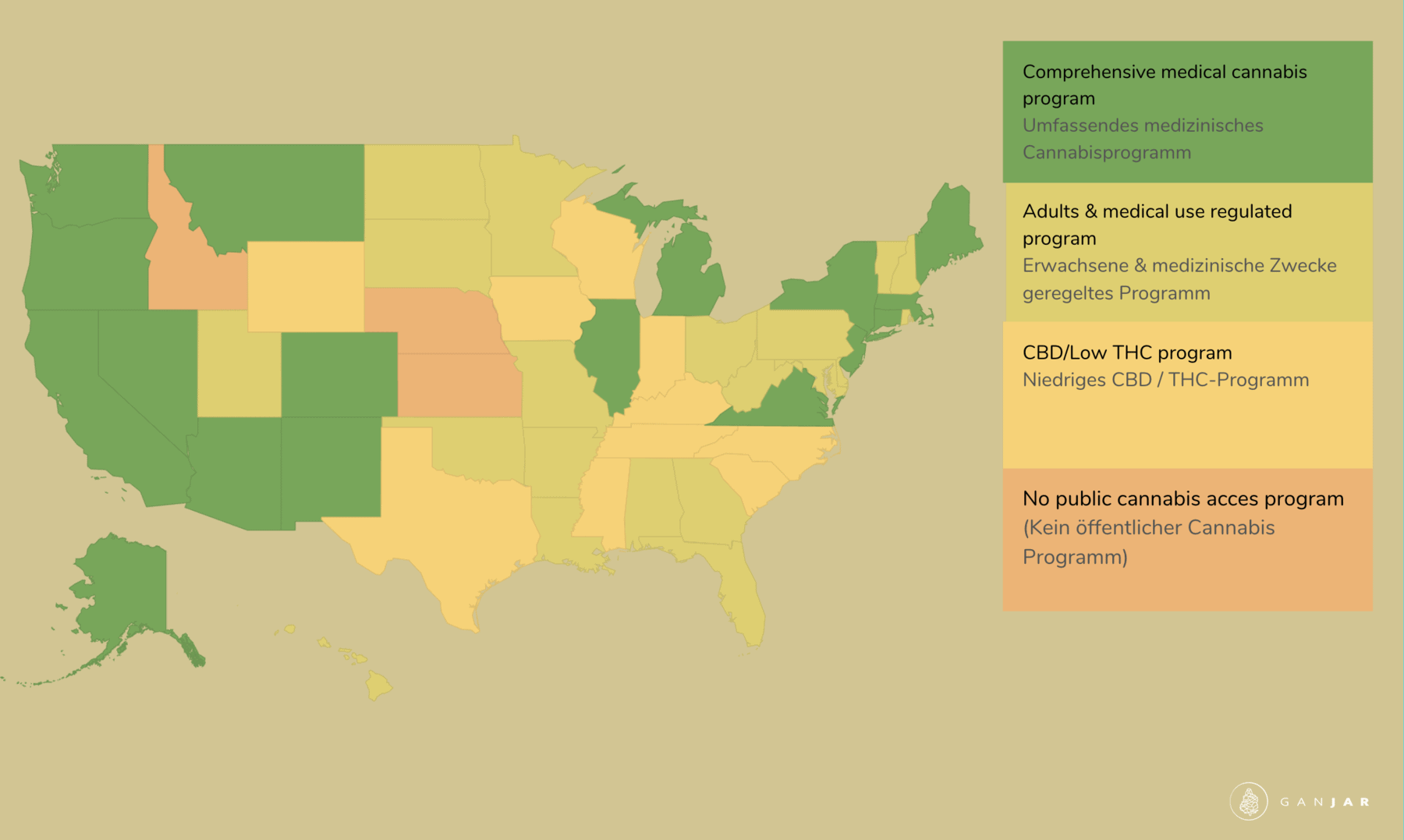Progression of CBD / THC ratio in cannabis
In the 70s According to official information, the THC contentin the USA was 3-4% on average. At that time, however, significantlyfewer samples were being tested and the procedure was not yet particularly mature. Often samples were used that were already a year or older and were probably not stored optimally.. Therefore, even then, something stronger could have been in circulation.

Today, more than 1,000 cannabis samples are tested annually by the National Institute of Drug Abuse (NIDA) as part of the Potency Monitoring Program. Most are probably aware that cannabis has grown stronger over the years. At the beginning of the 2010s, the “street weed” in the USA already had more than 10% THC. However, the THC increase is not only due to the waves of legalization in many countries. Since the early 2000s, growing techniques and growing equipment have become more advanced and professional.
In the meantime, cannabis is no longer used as a pure intoxicant, Even varieties that contain (almost) no psychoactive THC, but only the physically calming CBD, are enjoying increasing popularity. But before THC was professionally bred from flowers, there was a trend before legalization to grow weed with a lower amount of CBD.
Less CBD on the street, more CBD for the patient
Even before the wave of legalization in recent years immer häufiger Strains mit geringerem CBD- und höherem THC-Anteil gezüchtet, da die Meisten (fälschlicherweise) mehr an der psychedelischen, als an der beruhigenden, körperlichen Wirkung des CBDs interessierstrains with a lower CBD and higher THC content were bred more and more frequently, as most of them were (incorrectly) more interested in the psychedelic than the calming, physical effect of CBD.
We now know: Both components have a complementary effect and CBD counteracts the psychoactive effects of THC, which can complement the intoxication. Interesting is the execution of the Pharmaindex Yellow List, which compiles a very good list of the cannabis components and modes of action on this subpage.

In the end, it is certainly a matter of taste which ratio you prefer. The trend in recent years even shows a slight increase in the CBD content. High levels of THC and low levels of CBD in cannabis can be dangerous for people who are prone to psychosis or depression. Especially in countries where cannabis is prohibited, users are not able to estimate the composition of the flowers. Psychologically stressed people who just want to “come down” should rather use CBD-containing weed, but often get highly potent weed with low CBD and high THC content from the dealer.
Although it is not yet 100% clear whether “pure” CBD is an effective remedy for psychoses and other mental health problems, there are already studies that are showing promising results. The CBD can help with many other symptoms and diseases, such as sleep disorders, has now been well researched. A list of all “proven effects” can also be found in the Pharmaindex Yellow List.
High-potency CBD already available in many countries
Due to the constant decriminalization, the use of conventional cannabis and CBD has become more and more commercial. Meanwhile, an industry worth millions has developed. Currently (June 2021) 40% of Americans live in U.S. States where cannabis is more or less legal.
Of course, the liberalization of cannabis also has a strong impact on the CBD industry and consumption. Since 2014, sales of CBD have increased over 1,000%. Oils and creams are booming and more and more CBD shops are opening around the world. Always more As a result of this development, growers are starting to breed and produce more and more potent CBD.
Many CBD suppliers from Germany now offer high-quality CBD flowers with a share of up to 20%. They manage to keep the flowers below the legal limit of 0.2% THC. Because you can’t completely separate CBD from THC.
So-called moonrocks can also be produced through fermentation. The freshly harvested and still moist CBD flowers are stored at constant humidity for several weeks. In the process, unwanted components are emitted. After the fermentation process, these shrunken “rocks” are soaked in hemp extract and coated with CBD pollen and crystals. In this way, the CBD can be concentrated to up to 60%. Such a CBD joint can then have a similarly intense effect on the consumer (although not psychoactive) as “normal” weed.
The development of the CBD and THC ratio over the last 40-50 years shows that there is still a trend towards more THC. However, the trend has also turned to less CBD content and now a huge industry has also sprung up around pure CBD. Consumers are now looking at cannabis in more detail, and thanks to a lot of new research, it has long since ceased to be seen as a mere intoxicant. We would like to do our part in building knowledge and hope to make fermentation better known in addition to understanding the interaction between CBD and THC. It remains exciting to see how the market will develop in the future.
Further sources:
https://www.theatlantic.com/technology/archive/2015/03/was-marijuana-really-less-potent-in-the-1960s/387010/
https://www.humboldtseeds.net/de/blog/ist-marihuana-heute-5-mal-staerker-als-in-den-80ern/
https://www.astm.org/DIGITAL_LIBRARY/JOURNALS/FORENSIC/PAGES/JFS11698J.htm


